Tarot reading has long been intertwined with the practice of witchcraft, serving as a powerful tool for modern witches seeking insights, guidance, and personal transformation. With its origins rooted in centuries-old occult traditions, the history of tarot reading is fascinating and holds deep significance for those who embrace the craft. Today, tarot decks have become a staple in the witchcraft community, offering a means to tap into intuition and psychic abilities, as well as a means to connect with higher powers and manifest intentions. In this article, we will explore the impact of tarot reading on modern witchcraft practices, delving into its history, its role in spellwork and rituals, and its potential for self-reflection and personal growth. We will also discuss the ethics and responsibilities of tarot readers within the witchcraft community, and speculate on the future of tarot reading in the ever-evolving landscape of modern witchcraft.
Contents
- History of Tarot Reading
- The Role of Tarot in Witchcraft
- Popular Tarot Decks in Witchcraft
- Using Tarot for Spellwork and Rituals
- Combining Tarot with Other Witchcraft Tools
- Tarot Reading as a Form of Self-Reflection
- The Tarot Community and Modern Witchcraft
- Ethics of Tarot Reading in Witchcraft
- The Future of Tarot Reading in Witchcraft
- Conclusion
-
Frequently Asked Questions
- 1. How do tarot cards work in witchcraft?
- 2. What is the significance of the Major Arcana in tarot reading?
- 3. Can tarot cards predict the future?
- 4. How do witches incorporate tarot into spellwork?
- 5. Can anyone learn to read tarot cards?
- 6. What are the different types of tarot spreads?
- 7. Is it necessary to have psychic abilities to read tarot cards?
- 8. How can tarot cards be used for personal growth and self-reflection?
- 9. What ethics should be considered when giving tarot readings?
- 10. How has technology influenced the practice of tarot reading?
- References
History of Tarot Reading
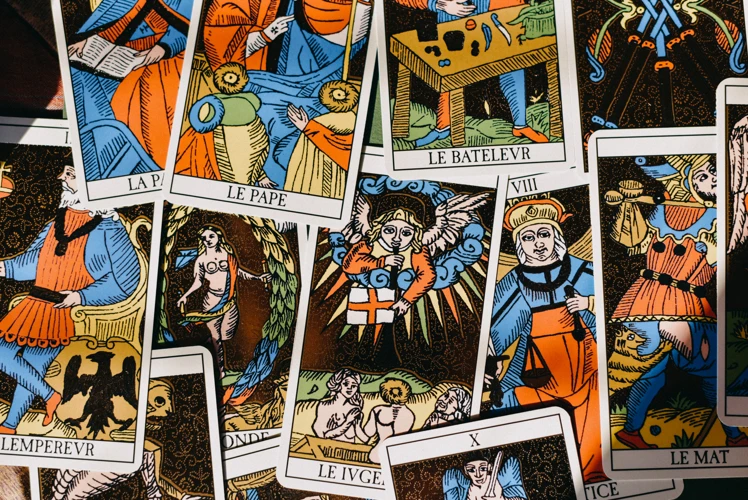
The history of tarot reading dates back to the 15th century, where the practice emerged in Europe as playing cards with symbolic imagery. These early decks, such as the Visconti-Sforza tarot deck, were primarily used for entertainment and gaming purposes. However, it wasn’t until the 18th century that tarot reading began to be associated with mystical and esoteric practices. Tarot decks like the Tarot de Marseille gained popularity among occultists and secret societies, who believed that the cards held profound spiritual and divinatory significance. The influential occultist, Etteilla, played a key role in shaping the interpretations and meanings assigned to each card, which have since become foundational in modern tarot reading. The 19th century witnessed a surge in the fascination with tarot, as esoteric societies like the Hermetic Order of the Golden Dawn incorporated tarot into their magical practices. This period laid the groundwork for the development of different tarot systems and the exploration of deeper symbolic meanings associated with the cards. Throughout the 20th century, tarot reading gained wider popularity, as it became accessible to a broader audience. Today, tarot reading continues to evolve, adapting to the digital age with virtual readings and online resources. The history of tarot reading is rich and diverse, shaped by various cultural influences and the continuous reinterpretation of its symbolism.
The Role of Tarot in Witchcraft
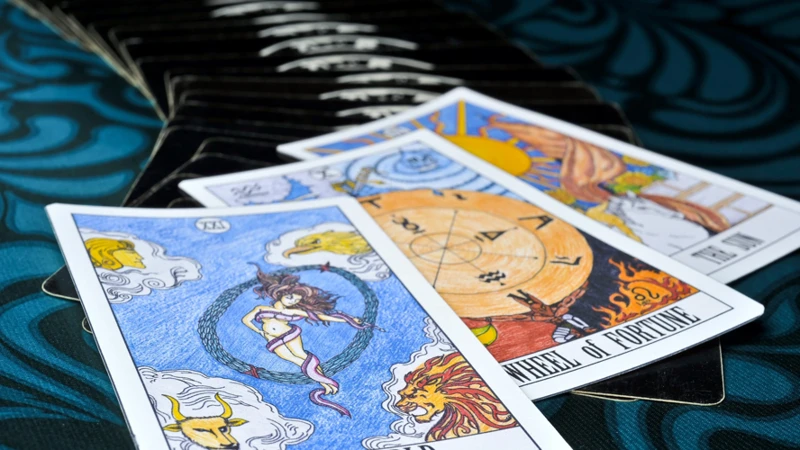
The role of tarot in witchcraft is multi-faceted and serves as a powerful tool for modern witches in various aspects of their practice. Firstly, tarot reading is utilized for gaining insights and guidance. Witches often consult the cards to seek answers to specific questions, gain clarity on situations, or receive guidance on the next steps to take. The symbolic imagery and archetypal representations of the tarot cards allow witches to tap into their intuition and connect with higher realms of consciousness. Secondly, tarot reading enhances intuition and psychic abilities. Regular practice with tarot cards can strengthen a witch’s intuitive powers, enabling them to perceive subtle energies, make accurate predictions, and enhance their ability to communicate with the spiritual realm. Tarot readings can also serve as a form of divination during spellwork, helping witches align their intentions with the energies and influences at play. By combining tarot with spellwork and rituals, witches can deepen their connection to the metaphysical and manifest their desires more effectively. The role of tarot in witchcraft is multifaceted, making it an invaluable tool for witches seeking personal transformation, spiritual growth, and magical empowerment.
1. Gaining Insights and Guidance
Gaining insights and guidance is one of the primary purposes of tarot reading in the practice of modern witchcraft. The process involves using the tarot deck as a tool to access intuitive wisdom and seek answers to questions or dilemmas. Each card in the deck carries unique symbolism and meaning, which can be interpreted to provide valuable insights and guidance. When a witch engages in a tarot reading, they often focus their intention on a specific question or area of their life that they need clarity on. By shuffling the cards and selecting a spread, such as the popular Celtic Cross spread, the reader attunes themselves to the energies of the cards and begins to reveal the messages the universe has to offer. The images and symbols depicted on the tarot cards serve as visual cues that trigger the reader’s intuition and facilitate the interpretation of the messages from their higher self or spiritual guides. Through tarot reading, witches can gain a deeper understanding of their current situation, insights into potential paths and choices, and guidance on how to navigate challenges or make decisions with confidence. It is important to note that tarot readings are not definitive answers but rather tools for reflection and guidance. The interpretation of the cards is subjective, allowing the witch to tap into their intuition and personal connection with the divine. Tarot reading has the potential to provide clarity, validation, and new perspectives, empowering witches to make informed decisions and navigate their spiritual journeys with a sense of guidance and purpose. For more information about the evolution of tarot reading in the digital age, you can read our accompanying article here.
2. Enhancing Intuition and Psychic Abilities
Enhancing intuition and psychic abilities is a key aspect of tarot reading in modern witchcraft practices. The symbolism and imagery depicted in tarot cards serve as powerful triggers for intuitive insights and connections to the spiritual realm. By regularly engaging in tarot readings, witches can tap into their innate psychic abilities and develop a heightened sense of intuition. Through the practice of interpreting the cards, witches learn to trust their intuitive impressions and expand their awareness of subtle energies. Tarot reading acts as an exercise in honing one’s psychic senses, allowing individuals to perceive and interpret the ethereal messages and guidance that may be present in the cards. The ritualistic nature of tarot reading contributes to the development of psychic abilities by creating a focused and meditative state of mind. In this state, individuals can access their deeper intuition and psychic channels, facilitating a profound connection to the unseen realms. The act of shuffling and selecting cards also serves as a form of energy manipulation, as the witch imbues their intentions and desires into the deck before selecting the cards that resonate with their energy. As a result, tarot reading becomes a transformative practice that not only enhances intuition and psychic abilities but also empowers witches to align with their spiritual gifts and embrace their intuitive power. /tarot-role-self-improvement/
Popular Tarot Decks in Witchcraft
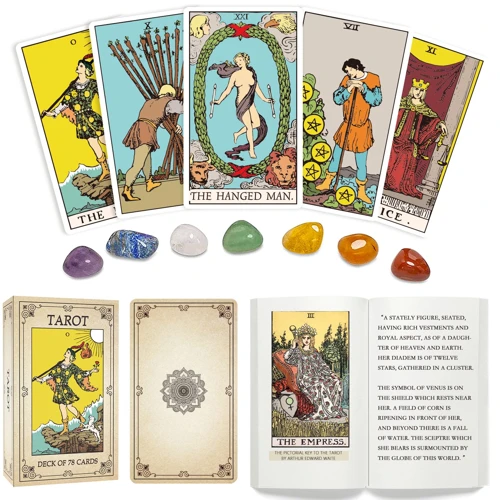
Popular tarot decks in witchcraft vary widely, catering to different preferences and interpretations within the witchcraft community. One of the most iconic tarot decks is the Rider-Waite-Smith deck, which was first published in 1910. This deck, illustrated by Pamela Colman Smith and with interpretations by Arthur Edward Waite, has become a staple and is recognized for its vibrant symbolism and imagery. The deck features 78 cards divided into the Major Arcana and Minor Arcana, each with its own unique meaning. Another popular deck is the Thoth Tarot, created by Aleister Crowley and Lady Frieda Harris. This deck delves deeper into the esoteric and occult aspects of tarot, incorporating complex symbolism and mystical references. For those seeking a deck with a more modern and diverse representation, the Modern Witch Tarot by Lisa Sterle offers a fresh perspective. This deck features inclusive and contemporary illustrations that resonate with a contemporary witchcraft audience. Other popular decks in witchcraft include the Wild Unknown Tarot, which incorporates nature-inspired imagery, and the Tarot of the Moon Garden, which emphasizes lunar and mystical themes. The influence of tarot in fashion trends cannot be overlooked either, as tarot-inspired designs, prints, and motifs have made their way into the world of fashion, showcasing the enduring appeal and cultural significance of tarot imagery and symbolism. Whether it’s the traditional Rider-Waite-Smith or a more modern and diverse deck, the choice of tarot deck in witchcraft is deeply personal and reflects the unique connection an individual witch has with the visual and symbolic language of the cards. Fashion trends further demonstrate the pervasive influence of tarot in various aspects of modern culture.
Using Tarot for Spellwork and Rituals
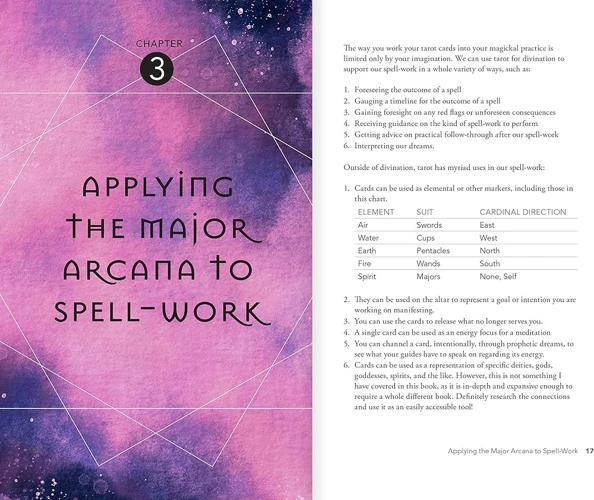
Using tarot for spellwork and rituals is a powerful way for modern witches to harness the energies of the cards and manifest their intentions. Tarot can be incorporated into spellwork by selecting cards that align with the desired outcome and using their symbolism to enhance the energy of the spell. For example, The High Priestess card may be chosen to enhance intuition and spiritual connection, while The Magician card can be used to amplify the ability to manifest desires. Tarot cards can also be laid out in specific spreads to provide guidance and insight into the spell’s progress and potential obstacles. Additionally, creating tarot spells and rituals involves crafting rituals that incorporate the energy of specific cards. This can include meditating on a chosen card, using its imagery as a focal point, or even incorporating the elements associated with the card into the ritual itself. Whether used as a divination tool or as a focal point for energy manipulation, incorporating tarot into spellwork and rituals can deepen the practitioner’s connection to the metaphysical and enhance the efficacy of their magical practices.
1. Tarot for Divination in Spells
Tarot cards are often used in witchcraft to enhance the effectiveness of spells through divination. Divination is the practice of gaining insight into future events or obtaining guidance by interpreting signs or symbols. In the context of spellwork, tarot cards can provide valuable information and guidance on the potential outcome of a spell.
When incorporating tarot into spellwork, the reader typically selects cards that correspond to the intention or desired outcome of the spell. For example, if the intention is to manifest love, cards such as The Lovers or The Empress may be chosen. By examining the symbolism and meanings of the selected cards, witches can gain insights into the energies or obstacles that may influence the spell’s success.
Tarot cards serve as a powerful tool for divination in spellwork because they offer a visual representation of the energies at play. Each card possesses its own unique symbolism and interpretation, which can be interpreted in relation to the specific spell and its desired outcome. Tarot allows witches to tap into their intuition and connect with higher powers or spirit guides to gain valuable insights into how their spells may unfold.
In addition to providing guidance, tarot cards can also help witches fine-tune their spellcraft. By drawing cards before casting a spell, witches can identify potential challenges or areas that require additional focus or energy. The cards may reveal hidden obstacles, suggest alternative approaches, or confirm that the spell is aligned with their intentions.
It’s important to note that the interpretation of tarot cards in spellwork is highly personal and subjective. Each witch brings their own unique understanding and connection to the cards, allowing for a deeply personal and intuitive approach. Tarot for divination in spells is a powerful practice that helps witches align their energy and intentions with the desired outcome, ultimately enhancing the effectiveness of their spellwork.
2. Creating Tarot Spells and Rituals
Creating tarot spells and rituals is a powerful way for witches to harness the energy and symbolism of the tarot cards to manifest their intentions and desires. Tarot can be used as a tool for divination and guidance, but it can also be integrated into spellwork and ritual practices. When creating tarot spells, one can utilize the imagery, symbolism, and inherent energy of specific cards to amplify their intentions. Each card holds its own unique energy and meaning, which can be aligned with the desired outcome of the spell. For example, the High Priestess card may be used in spells related to intuition, spiritual growth, or accessing hidden knowledge. Likewise, the Emperor card could be incorporated into spells that focus on leadership, authority, and manifestation. To create a tarot spell, one may begin by selecting the appropriate cards that align with their intention. These cards can be placed on an altar, arranged in a specific pattern, or used as visual aids during the ritual. Additionally, other elements such as candles, crystals, herbs, or incense can be incorporated to enhance the energy and symbolism of the spell. During the ritual, the practitioner may engage in visualization, chanting, or meditation to focus their intent and energy, while the tarot cards serve as a tangible representation of their desires. Through this integration of tarot and spellwork, witches can tap into the transformative power of both practices, further deepening their connection to the magical energies of the universe. Creating tarot spells and rituals allows practitioners to infuse their personal energy and intention into their craft, fostering a deeper sense of empowerment and manifestation in their magical practice.
Combining Tarot with Other Witchcraft Tools
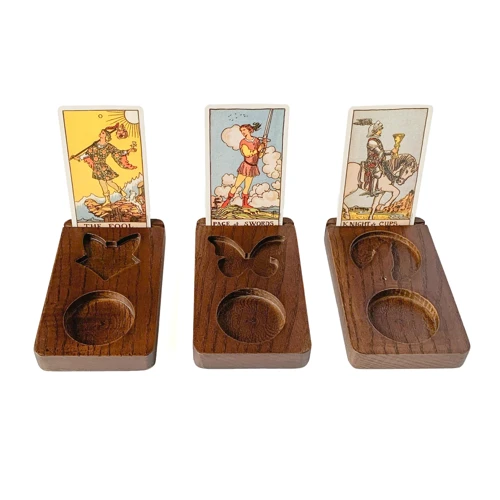
Combining tarot with other witchcraft tools can enhance the power and effectiveness of both practices. Many witches incorporate tarot readings into their spellwork and rituals, as the cards can provide deeper insights and guidance. One common way to combine tarot with other tools is by using it alongside crystals. Crystals are believed to hold specific energies and vibrations, and by selecting crystals based on the tarot reading, witches can amplify the intentions and energies they wish to manifest. For example, if a tarot reading suggests the need for grounding and stability, a witch may choose to work with crystals like hematite or smoky quartz.
Another tool that pairs well with tarot is herbs and potions. Witches who utilize herbs in their practice can incorporate them into tarot rituals to enhance the desired outcomes. For instance, a witch may burn corresponding herbs or use them in a bath before or during a tarot reading to promote relaxation, clarity, or spiritual connection. The scents and energies of the herbs then combine with the symbolism of the tarot cards, creating a multi-dimensional and powerful experience.
Candles are also frequently used in conjunction with tarot readings. Different colored candles can be associated with specific intentions or energies, and by lighting them during a reading, witches can create a focused and sacred space for divination. The candle’s flame adds an element of visualization and focus, enhancing the intuitive connection to the cards.
Symbols and sigils can be incorporated into tarot readings to further amplify the intentions and messages received. Witches may draw sigils on the cards, create a sigil grid for the reading, or place sigils around the tarot spread to infuse additional energy and intention into the reading.
By combining tarot with other witchcraft tools, witches can create a holistic and immersive practice that brings together various modalities and energies. This integration allows for a deeper understanding of the tarot messages and a more potent manifestation of intentions. The possibilities for combining these practices are limitless, allowing each witch to create a unique and personalized experience that aligns with their intentions and desires.
Tarot Reading as a Form of Self-Reflection
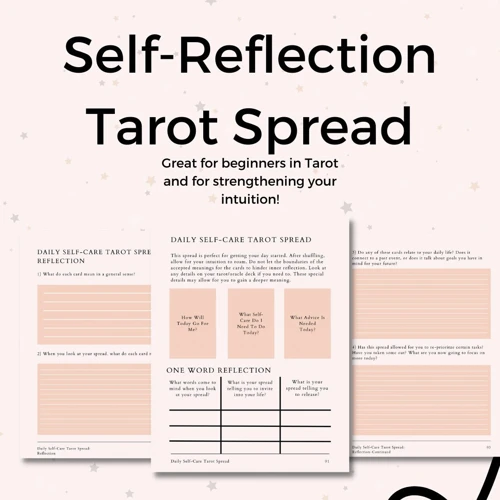
Tarot reading serves as a powerful tool for self-reflection and introspection, allowing individuals to gain a deeper understanding of themselves and their life’s journey. By examining the symbolism of the cards and their positions within a spread, individuals can gain valuable insights into their emotions, thoughts, and behaviors. The cards act as mirrors, reflecting hidden aspects of the self and shining light on areas that may need attention or growth. Tarot can help individuals recognize patterns in their lives, both positive and negative, and provide guidance on how to navigate challenges and make informed decisions. Through the process of self-reflection with tarot, individuals can gain clarity, uncover hidden desires and goals, and gain a better understanding of their own strengths and areas of improvement. Whether used as a daily practice or during significant life transitions, tarot reading offers a introspective journey where individuals can truly connect with themselves on a deeper level, promoting self-awareness, personal growth, and ultimately a more balanced and fulfilling life.
1. Understanding Personal Patterns and Energies
Understanding personal patterns and energies is a key aspect of tarot reading in the context of self-reflection. Tarot cards act as mirrors, reflecting back to the individual their own thoughts, emotions, and behaviors. By examining the symbolism and messages within the cards, individuals can gain insight into recurring patterns in their lives, both positive and negative. The cards serve as a tool for self-awareness, allowing individuals to identify limiting beliefs, fears, and unresolved emotions that may be influencing their experiences. The archetypes and symbols depicted in the tarot cards can tap into the collective unconscious, revealing universal themes and truths that resonate with the individual’s personal journey. Through tarot, individuals can uncover deeper aspects of their psyche, accessing hidden strengths, desires, and passions. This process of self-discovery and understanding can lead to personal growth, healing, and the transformation of negative patterns into positive ones. The energies represented by the cards, such as love, abundance, creativity, or challenges, offer guidance and a broader perspective on one’s current circumstances. By studying the subtle variations in energy and imagery across different tarot decks, individuals can fine-tune their intuition and expand their understanding of themselves and their place in the world. Tarot as a tool for understanding personal patterns and energies invites individuals to embark on a transformative journey of self-exploration and empowerment.
Navigating life challenges is an inevitable part of our journey, and tarot reading can serve as a valuable tool for guidance and clarity during these trying times. When faced with difficult decisions or uncertain situations, consulting tarot cards can provide insight into potential paths and offer messages from the universe. Tarot offers a unique perspective by tapping into the subconscious mind and revealing hidden aspects of ourselves and our situations. Each card holds its own symbolism and meaning, inviting us to reflect on our current circumstances and consider alternative perspectives. Through tarot, we can gain a deeper understanding of the energies at play in our lives and make more informed choices. Whether it’s a job change, relationship turmoil, or personal growth, tarot cards can act as a mirror, allowing us to explore our fears, desires, and hopes. By asking specific questions and interpreting the cards’ messages, we can navigate life challenges with a renewed sense of clarity and confidence. It’s important to remember that tarot readings are not a definitive answer or prediction, but rather a tool for self-reflection and exploration, ultimately empowering us to make decisions aligned with our highest good. Tarot provides solace and encouragement during difficult times, guiding us towards the light amidst the darkness.
The Tarot Community and Modern Witchcraft
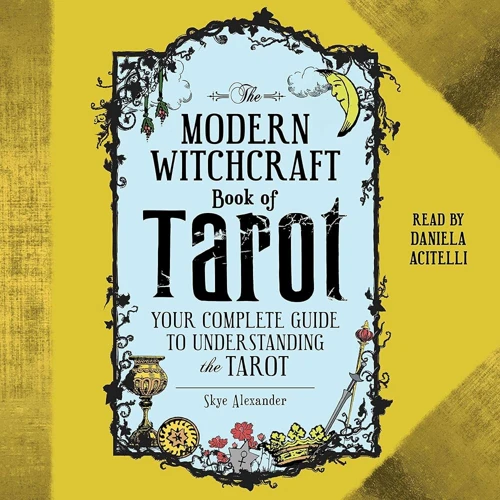
The Tarot community plays an integral role in modern witchcraft, serving as a hub of knowledge sharing, support, and community engagement. Within this vibrant community, practitioners of witchcraft come together to explore and exchange ideas, techniques, and interpretations related to tarot reading. Online forums, social media groups, and dedicated websites provide platforms for witches to discuss different decks, card meanings, spreads, and divination techniques. Many tarot readers within the witchcraft community offer their services professionally, providing tarot readings and guidance to those seeking spiritual insight and guidance. This sense of community fosters a collective learning experience, where witches can expand their knowledge of tarot, share personal experiences, and seek guidance from more experienced practitioners. Additionally, the Tarot community actively contributes to the preservation and evolution of tarot traditions, with workshops, conventions, and gatherings dedicated to exploring the intersection of tarot and witchcraft. These events offer workshops on tarot interpretation, spellwork, and ritual use of tarot, allowing practitioners to delve deeper into their craft. The Tarot community in the realm of witchcraft is a testament to the enduring vitality of both practices, highlighting the interconnectedness between the two and providing a supportive environment for practitioners to grow and learn together.
Ethics of Tarot Reading in Witchcraft
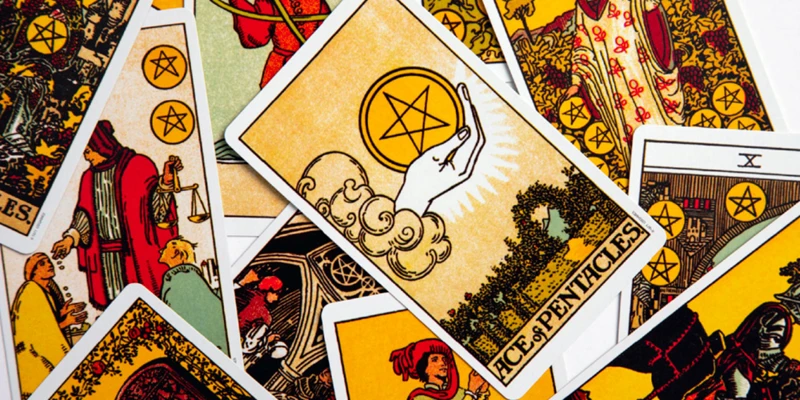
Ethics play a crucial role in tarot reading within the context of witchcraft, guiding practitioners to navigate their responsibilities and interactions with clients. Consent and boundaries are paramount, as tarot readers must always obtain explicit permission before conducting a reading and respect the client’s right to decline or discontinue the session. It is essential for tarot readers to create a safe and supportive space for their clients, ensuring confidentiality and maintaining a non-judgmental stance throughout the reading. Accountability is another important aspect, as tarot readers should acknowledge the power dynamics involved and approach their practice with integrity, honesty, and transparency. It is their duty to provide accurate and unbiased interpretations, while also acknowledging the limitations of tarot as a tool for divination. Empathy, compassion, and respect for cultural and spiritual diversity are key elements that guide the ethical conduct of tarot readers within the witchcraft community. Upholding these ethical principles helps to foster trust, promote personal growth, and create a positive and transformative experience for all involved.
1. Consent and Boundaries in Tarot Readings
In the realm of tarot reading, establishing consent and boundaries is of utmost importance. When conducting a tarot reading, a reader must always obtain consent from the querent before diving into their personal energy and providing insights. This ensures that the querent feels comfortable and empowered throughout the reading process. Consent extends beyond just the initial agreement to participate; it also applies to the level of detail and personal information shared during the reading. Tarot readers should respect the querent’s boundaries and only delve into topics that the querent is willing to explore. It is crucial for the reader to communicate openly with the querent and create a safe space for them to express any concerns or discomfort. Additionally, the reader must adhere to ethical principles, such as maintaining confidentiality and not exploiting the querent’s vulnerability. Consent and boundaries are an integral part of maintaining trust and integrity within tarot reading, as they ensure that the querent retains agency over their own experience. By fostering consent and setting clear boundaries, tarot readers can provide a safe and empowering environment for their clients to seek guidance and gain insights.
2. Responsibility and Accountability as a Tarot Reader
Responsibility and accountability are crucial aspects for tarot readers to consider in their practice. As a tarot reader, one must recognize the potential impact their readings can have on the individuals seeking guidance. It is the responsibility of the reader to provide a safe and non-judgmental space for clients, respecting their boundaries and privacy. This involves obtaining consent before conducting a reading and ensuring that the client feels comfortable throughout the process. Additionally, a tarot reader must maintain a high level of professionalism and integrity by honoring client confidentiality and refraining from offering medical, legal, or financial advice unless qualified to do so. Accountability goes hand in hand with responsibility, as a tarot reader should constantly strive to improve their skills, knowledge, and ethical understanding. Regular self-reflection and self-assessment are essential to identify any biases or limitations that may impact the reading experience. As tarot readers are often seen as spiritual guides, it is essential to be aware of the influence and power dynamics inherent in this role. This means avoiding manipulation or exploitation and emphasizing the client’s personal agency and autonomy. By maintaining a strong sense of responsibility and by holding themselves accountable, tarot readers can provide a meaningful and ethical experience for their clients, fostering trust and respect within the tarot community.
The Future of Tarot Reading in Witchcraft
The future of tarot reading in witchcraft holds endless possibilities as the craft continues to evolve and adapt to the modern world. With the advancement of technology, tarot reading has become more accessible than ever before. Online platforms and mobile applications now offer virtual tarot readings, allowing individuals to connect with tarot readers from all around the world. This digital age has also brought about new ways of learning and exploring tarot, with online courses and resources readily available for aspiring practitioners. Social media platforms have created a vibrant tarot community where witches can share their readings, interpretations, and experiences, fostering a sense of connection and support. As witchcraft becomes increasingly accepted and mainstream, the demand for tarot readings is likely to continue to rise. However, it’s important to remember the value of personal connection and intuition in tarot reading. While technology can enhance accessibility, the essence of tarot lies in the deep emotional and spiritual connection between the reader and the seeker. As we look ahead, there may be an integration of traditional and digital practices, as well as innovative approaches to tarot reading within the witchcraft community. Whether it’s incorporating virtual reality or exploring new methods of energy healing, the future of tarot reading in witchcraft holds exciting potential for growth and transformation. It will continue to be a powerful tool for seekers to gain insights, find guidance, and connect with higher powers on their spiritual journeys.
/evolution-tarot-reading-digital-age/
Conclusion
In conclusion, tarot reading has had a profound impact on modern witchcraft practices. Through its use in gaining insights and guidance, enhancing intuition and psychic abilities, and as a tool for self-reflection, tarot has become an integral part of the witchcraft community. The history of tarot reading showcases its evolution from a mere playing card game to a powerful divinatory and spiritual practice. The popularity of tarot decks among witches highlights the significance of this tool in spellwork and rituals, where the cards are used for divination and creating personalized spells. Additionally, the integration of tarot with other witchcraft tools, such as crystals and candles, further strengthens the magical practice. Tarot reading also serves as a means of self-reflection, allowing individuals to gain a deeper understanding of their patterns, energies, and to navigate life challenges. However, it is important for tarot readers to uphold ethics, ensuring consent, boundaries, and accountability in their interactions with clients. The future of tarot reading in witchcraft holds endless possibilities as the practice continues to adapt to the changing times. Whether through incorporating technology or exploring different tarot systems, tarot reading will undoubtedly remain a vital aspect of modern witchcraft, offering guidance, empowerment, and spiritual growth to practitioners.
Frequently Asked Questions
1. How do tarot cards work in witchcraft?
Tarot cards work in witchcraft by tapping into the intuitive and psychic abilities of the reader. The cards act as a divination tool, allowing witches to gain insights, guidance, and connect with higher powers or spirits.
2. What is the significance of the Major Arcana in tarot reading?
The Major Arcana cards in tarot reading represent major life events, spiritual lessons, and archetypal energies. These cards hold significant symbolism, offering deeper insights into the journey of self-discovery and transformation.
3. Can tarot cards predict the future?
Tarot cards are not meant to predict the future with absolute certainty. Instead, they provide guidance and potential outcomes based on the current energy and choices of the individual. The future is always influenced by free will and personal agency.
4. How do witches incorporate tarot into spellwork?
Witches incorporate tarot into spellwork by using specific cards to enhance the energy and intention of the spell. They may choose cards that symbolize desired outcomes or draw cards to gain insight into the best course of action for their spells.
5. Can anyone learn to read tarot cards?
Yes, anyone can learn to read tarot cards. It requires practice, study of the cards’ meanings, and developing intuition. With dedication and patience, anyone can become proficient in tarot reading.
6. What are the different types of tarot spreads?
There are numerous types of tarot spreads, ranging from simple three-card spreads to more elaborate spreads like the Celtic Cross. Each spread has a specific layout and purpose, allowing the tarot reader to explore different aspects of a question or situation.
7. Is it necessary to have psychic abilities to read tarot cards?
No, it’s not necessary to have psychic abilities to read tarot cards. While psychic abilities can enhance the accuracy of readings, tarot reading is also a skill that can be learned through understanding the symbolism of the cards and developing intuition.
8. How can tarot cards be used for personal growth and self-reflection?
Tarot cards can be used for personal growth and self-reflection by offering insights into one’s thoughts, emotions, and patterns of behavior. They provide a mirror into the subconscious mind, helping individuals gain a deeper understanding of themselves and their journey.
9. What ethics should be considered when giving tarot readings?
When giving tarot readings, it is important to respect the privacy and boundaries of the querent. Tarot readers should also be honest, compassionate, and refrain from making absolute predictions or giving medical, legal, or financial advice.
10. How has technology influenced the practice of tarot reading?
Technology has made tarot reading more accessible to a wider audience through virtual readings, online resources, and tarot apps. However, traditionalists may argue that the physical connection with the cards and personal energy exchange during in-person readings can be more powerful.






